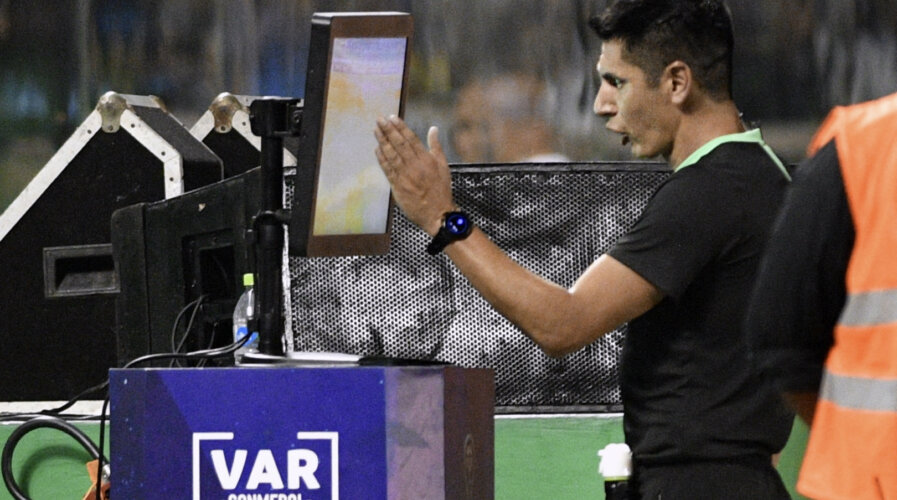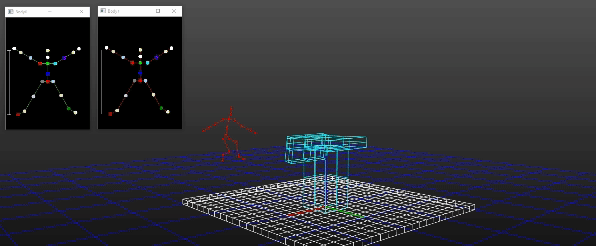
AI in sports merely help referees with decisions. (Photo by AIZAR RALDES / AFP)
AI still has a long way to go in sports
• AI in sports is advancing exponentially.
• Generative AI in sports makes for significantly more accurate calls.
• But it’s too early for generative AI to take over the role of a human referee.
AI in sports is nothing new. Before the hype of generative AI, technology had already revolutionized various sports. From sensors in tennis balls to goal-line technology, nearly every sport now incorporates some technological element.
While sports technology continues to innovate, concerns have arisen about who should make the final decisions. For instance, football introduced the video assistant referee (VAR) in the 2018/19 Laws of the Game. Meanwhile in tennis, balls are equipped with sensors and are tracked from various angles, producing a 3D representation of the ball’s trajectory. That allows players and umpires to verify their calls during a match.
The technology in these sports is provided by Hawk-Eye, a computer vision system. Beyond football and tennis, Hawk-Eye’s technology has been adopted in cricket, badminton, rugby, and volleyball. The technology operates by tracing the ball’s trajectory. Owned by Sony, Hawk-Eye has significantly transformed the role of technology in sports.
According to The Daily Mail, the English Premier League (EPL) intended to introduce an automatic offside system by embedding sensors in match balls. This technology had been previously employed during the FIFA World Cup. However, its EPL deployment has been postponed due to contractual complications with the ball supplier, Nike.
However, there’s an underlying challenge. The technology doesn’t make decisions. Instead, it offers referees and umpires a clearer view to assist their decision-making.

The big screen displays the decision that after a VAR (Video Assistant Referee) review a goal from Manchester United’s Argentinian midfielder #49 Alejandro Garnacho is disallowed for offside during the English Premier League football match between Arsenal and Manchester United at the Emirates Stadium in London on September 3, 2023. (Photo by Glyn KIRK / AFP)
AI and technology in sports
There is a growing demand for AI in sports, particularly to enhance precise decision-making. Currently, AI’s role in sports mainly revolves around generating insights or game analysis. However, generative AI is evolving this landscape.
During the recent US Open tennis tournament, IBM Consulting collaborated with the US Tennis Association (USTA) to develop generative AI models. These models transform tennis data into insights and original content for the US Open app and website. IBM watsonx, a next-generation AI and data platform, orchestrated the entire lifecycle of these AI models. These models power essential app features like Match Insights and the new AI Commentary for US Open reels.
The team used watsonx data to connect and curate the USTA’s trusted data sources. The curation process involved de-duplicating and filtering foundational data, informing the large language model, along with the USTA’s proprietary data. The AI Commentary model translates metadata from video clips into sentences. It churns out numerous options before settling on the optimal sentence to describe the action. This process ensures diverse sentence structures for each clip to prevent repetition. Subsequently, text-to-speech capabilities vocalize these descriptions.
Generative AI sports commentaries are game-changers. However, the potential for this technology in sports remains vast. Fans worldwide are calling for more AI involvement in games, especially when it comes to making judgment calls. Many believe that despite technological assistance, human officials still make errors in their decisions.
Recently, EPL referees have faced criticism for incorrect judgment calls, even when technology clearly highlighted issues during matches. Given the high stakes in these games, any misjudgment can lead to significant repercussions.
This is the future of watching sports for younger audiences – the use of AI and internet of things (IoT) sensors embedded in the ball and player clothings (shoulder pads for NFL players) pic.twitter.com/FylNWryWqb
— Vala Afshar (@ValaAfshar) October 1, 2023
Should sports have AI referees and judges?
While the idea of AI referees in football matches might seem far-fetched, some sports are already incorporating generative AI in evaluating performances and athletes.
The International Gymnastics Federation (FIG) has collaborated with Fujitsu to develop a judging support system (JSS) for the 52nd Artistic Gymnastics World Championships in Antwerp, Belgium.
Rather than relying on sensors, this advanced AI solution employs camera-based image analysis to ensure greater fairness, accuracy, and comprehensive judging support. This aids in optimizing evaluations of performances. Fujitsu’s unique AI technologies empower the system, delivering significant enhancements in processing speed. This allows judges to scrutinize gymnasts’ performances with unprecedented precision and detail, capturing complex movements in near real-time.

Fujitsu’s Human Motion Analytics (HMA) is a data analysis platform based on the world’s most advanced high-precision posture recognition technology developed through the Judging Support System adopted by FIG. (Source – Fujitsu)
The deployment of this refined system in competitions aligns with Fujitsu’s intention to unveil its Human Motion Analytics platform in April 2024. This aims to assist in gymnast training, in line with the vision for Fujitsu Uvance. That vision encompasses innovative solutions addressing business challenges and societal issues. The new solution merges cutting-edge AI technology and image analysis expertise acquired through the JSS project to cater to a variety of challenges across sectors like healthcare, retail, manufacturing, and entertainment.
Employing AI for judgment in sports such as gymnastics is logical, given that gymnasts typically perform set routines. However, in sports like football, rugby, or basketball, implementing AI presents a more intricate, multi-body challenge.
Aldo Comi, the chief executive of leading global football analytics provider Soccerment, believes that robots could replace human referees within the next three decades. According to a report by The Independent, Comi said that with the influx of high-quality data, it might become feasible for matches to be officiated by AI-driven machinery, eliminating the need for human referees on the field.
“The amount of data that is tagged and the quality of the models that are trained with that data will increase exponentially, and thanks to that, you will have AI models that can make refereeing decisions on the back of what they see on the pitch,” said Comi.
However, there’s a catch. Until technology can accurately interpret human emotions, entrusting a machine with the referee’s role remains problematic. This is not solely due to the team dynamics of these sports but also the emotional undercurrents that pervade matches.
Undoubtedly, the sports industry will witness an upswing in AI adoption, primarily for player analysis and insight generation. When it comes to decision-making, while AI can provide valuable insights, the ultimate call – at least for now – still demands a human touch.
READ MORE
- Safer Automation: How Sophic and Firmus Succeeded in Malaysia with MDEC’s Support
- Privilege granted, not gained: Intelligent authorization for enhanced infrastructure productivity
- Low-Code produces the Proof-of-Possibilities
- New Wearables Enable Staff to Work Faster and Safer
- Experts weigh in on Oracle’s departure from adland




